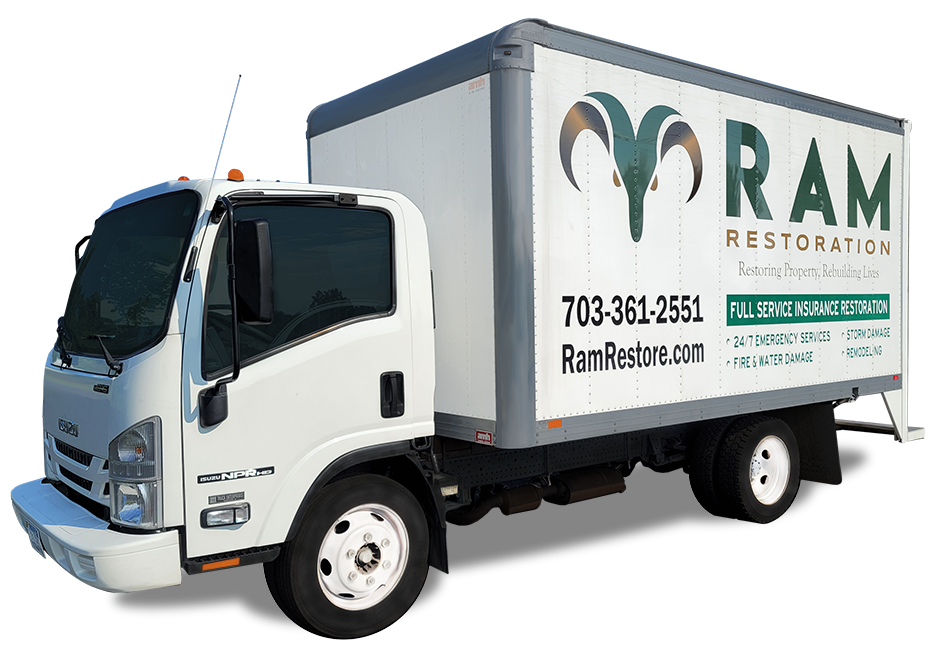In this section, we will discuss the various ways in which water damage can affect your property items. Understanding these impacts is crucial for minimizing loss and ensuring the proper restoration of your belongings.
Water damage can wreak havoc on your property items, causing significant damage, financial loss, and emotional distress. From home furnishings to electronics and the structural integrity of your property, water can leave a trail of destruction in its wake.
Whether it’s a burst pipe, a leaking roof, or a natural disaster, water damage can have far-reaching consequences. It’s important to be aware of the potential impacts and take swift action to mitigate the damage.
Key Takeaways:
- Water damage can cause extensive damage and financial loss to your property items.
- Prompt action is crucial to minimize the impact of water damage.
- Home furnishings, electronics, and the structural integrity of your property are particularly vulnerable to water damage.
- Professional assistance may be necessary for effective restoration and salvage.
- Regular maintenance and preventive measures can help prevent water damage.
Effects of Water Damage on Home Furnishings
When it comes to water damage, your home furnishings are not immune to its detrimental effects. Prolonged exposure to water can lead to a range of problems, causing significant damage and potentially rendering your beloved items unsalvageable.
In this section, we will explore the various ways in which water can ruin your home furnishings, including upholstered furniture, carpets, rugs, curtains, and mattresses. Understanding these effects is crucial for taking prompt action and seeking professional assistance to mitigate the damage.
1. Mold Growth
One of the primary concerns with water-damaged furnishings is the potential for mold growth. Mold thrives in damp environments, and even small amounts of moisture can create a breeding ground for mold spores. When left untreated, mold can not only cause an unpleasant odor but also pose a risk to your health.
2. Discoloration
Water damage can often lead to unsightly discoloration on your furnishings. The moisture can cause colors to bleed, leaving behind unsightly stains or patches. This discoloration can be particularly challenging to remove, even after the water has dried.
3. Warping
Wooden furniture is especially vulnerable to water damage as it has a natural tendency to absorb moisture. When exposed to excess water, the wood can warp and lose its original shape, resulting in structural instability. This warping can sometimes be irreversible, leading to the need for replacement.
4. Structural Damage
Prolonged exposure to water can weaken the structural integrity of your furnishings. Upholstery may lose its padding or support, causing it to sag or become uncomfortable. Water can also damage the frames of furniture, leading to a compromised structure that poses safety hazards.
5. Damage to Fabrics
Water damage can significantly impact the fabrics used in your home furnishings. Fabrics may shrink, stretch, or lose their texture when exposed to water. This can create an uneven appearance and affect the overall aesthetic appeal of your furniture and other soft furnishings.
Knowing the effects of water damage on your home furnishings allows you to act swiftly and effectively to minimize the damage. Seeking professional water damage restoration services can help salvage your items and restore them to their pre-damaged condition.
| Home Furnishing | Potential Effects of Water Damage |
|---|---|
| Upholstered Furniture | Mold growth, discoloration, warping, structural damage |
| Carpets | Mold growth, discoloration, warping, damage to fabrics |
| Rugs | Mold growth, discoloration, warping, damage to fabrics |
| Curtains | Mold growth, discoloration, damage to fabrics |
| Mattresses | Mold growth, discoloration, warping, damage to fabrics |
As seen in the table above, different home furnishings can be affected by water damage in similar ways. It emphasizes the importance of taking immediate action to prevent further damage and ensure the longevity of your treasured items.
Now that you understand the effects of water damage on your home furnishings, it’s essential to address any water-related incidents promptly. The quicker you act, the higher the chances of successfully restoring and salvaging your beloved furnishings.
Water Damage and Electronics
When it comes to water damage, one area of concern that often gets overlooked is the impact on electronic devices. From computers and televisions to appliances and audiovisual equipment, exposure to water can have serious detrimental effects.
The risk of electrical malfunctions is one of the most significant consequences of water damage. Water can compromise the circuitry of electronic devices, leading to short circuits, power surges, or complete failure. Even a small amount of water infiltration can disrupt the delicate inner workings of these devices, rendering them useless.
Corrosion is another major concern. The minerals and impurities present in water can cause corrosion on metal components, such as circuit boards and connectors. Over time, this corrosion can eat away at the sensitive electronic parts, causing irreversible damage. It can also lead to poor connectivity and intermittent issues, affecting the performance and functionality of the devices.
It’s important to note that even if the initial water damage seems minor, the long-term effects can be significant. Moisture trapped inside the devices can create a breeding ground for mold and further accelerate corrosion. Without proper attention and restoration, the damage can escalate over time, leading to costly repairs or replacements.
If your electronic devices have been exposed to water, it’s crucial to act quickly. First and foremost, disconnect the power source and avoid turning on or plugging in the devices. Wiping or drying the surface may not be enough; moisture may have penetrated deeper into the internal components.
Instead, it’s best to seek professional assistance from a licensed technician experienced in water damage restoration for electronics. They have the expertise and equipment to safely assess, clean, and repair the devices. They can also evaluate the extent of the damage and advise on the salvageability of the affected electronics.
In the next section, we will discuss the impact of water damage on the structural integrity of your property. From weakened foundations to compromised walls, understanding the potential risks is crucial for protecting your home.
Structural Integrity and Water Damage
Water damage can have a profound impact on the structural integrity of your property. When water seeps into the various components of your building, it can lead to a range of issues that compromise the stability and safety of your home.
One of the most significant concerns is the potential weakening of foundations. Excessive water exposure can cause soil erosion and foundation shifting, jeopardizing the overall stability of your property. This can result in uneven floors, cracks in walls and ceilings, and even structural collapse in severe cases.
Rotting wood is another consequence of water damage that can severely impact the structural integrity of your property. Over time, water seepage can cause wooden beams, joists, and support structures to deteriorate. This weakens the framework of your home, making it susceptible to structural failure and compromising the safety of occupants.
The compromised walls and ceilings resulting from water damage also pose significant risks. Water can cause drywall to become soft, disintegrate, and lose its load-bearing capacity. This can lead to sagging ceilings, bulging walls, and potential collapses, posing a threat to the occupants of the building.
It’s crucial to address water damage promptly to mitigate these structural concerns. Seeking professional assistance for thorough inspections, repairs, and restoration is essential for preserving the structural integrity of your property.
In the next section, we will discuss the factors that determine whether certain items can be salvaged after water damage. We will explore the importance of prompt water removal and drying techniques in making informed decisions about salvageability.
Salvageable vs. Unsalvageable Items
When dealing with water damage, it is important to assess the condition of your belongings to determine whether they can be salvaged or if they are unsalvageable. Several factors come into play when making this evaluation, including prompt water removal, drying techniques, and the current state of the items.
The first step is to remove the water as quickly as possible. Immediate action can help prevent further damage and increase the chances of salvaging your possessions. Use absorbent materials, towels, or even a wet vacuum to extract as much water as you can. This will minimize the absorption and potential spreading of moisture to other items.
Next, focus on drying the affected items thoroughly. Proper drying techniques are crucial to prevent mold growth and further deterioration. Open windows, use fans, dehumidifiers, and consider using a professional-grade air mover to circulate air effectively. Ensure that every surface of the item is thoroughly dried, including hard-to-reach areas and hidden spaces such as drawers and compartments.
Once the items are dry, carefully inspect them to determine their salvageability. Assess their structural integrity and look for signs of water damage such as warping, discoloration, or mold growth. Pay close attention to materials that are more susceptible to water damage, such as upholstered furniture, porous surfaces, and electronics.
Items that have been minimally affected, show no signs of structural damage, and have been thoroughly dried have a higher chance of being salvageable. These can be restored and returned to their original condition with proper cleaning and disinfection.
On the other hand, items that have sustained extensive damage, show signs of structural weakness, or have been in contact with contaminated water may be deemed unsalvageable. These items pose health risks or are beyond repair, making it unsafe or impractical to restore them.
Remember, every situation is unique, and it is always recommended to consult with water damage restoration professionals for an accurate assessment of salvageable and unsalvageable items. Their expertise and experience can help guide you in making informed decisions to minimize loss and ensure the safety of your property and belongings.
Conclusion
In conclusion, it is crucial to understand the impacts of water damage on your property items in order to minimize loss effectively. Whether it is your home furnishings, electronics, or the structural integrity of your property, taking swift action and seeking professional assistance can greatly mitigate the damage caused by water-related incidents.
When water damage occurs, every moment counts. Promptly addressing the issue and engaging the services of experienced restoration professionals can help prevent further damage and increase the chances of salvaging affected items. By acting quickly, you can minimize the risk of mold growth, structural deterioration, and irreparable harm to your valuable belongings.
Stay informed and prepared to protect your property items from water damage. Implement preventive measures such as regular maintenance, identifying and repairing potential vulnerabilities, and installing proper drainage systems where necessary. Additionally, consider obtaining appropriate insurance coverage that includes protection against water-related incidents.
Remember, water damage can have far-reaching consequences on your property and belongings. By staying proactive, staying informed, and seeking professional help when needed, you can effectively safeguard your valuable possessions and minimize the impact of water-related incidents.
FAQ
How does water damage affect home furnishings?
Water damage can ruin home furnishings such as upholstered furniture, carpets, rugs, curtains, and mattresses. Prolonged exposure to water can lead to mold growth, discoloration, warping, and structural damage.
What are the potential effects of water damage on electronic devices?
Water damage can have detrimental effects on electronic devices, including computers, televisions, appliances, and audiovisual equipment. It can result in electrical malfunctions, corrosion, and irreversible damage to the circuitry.
How does water damage impact the structural integrity of a property?
Water damage can compromise the structural integrity of a property by causing weakened foundations, rotting wood, and compromised walls and ceilings. This poses significant safety concerns when water seeps into structural components.
What factors determine whether an item is salvageable after water damage?
Prompt water removal, appropriate drying techniques, and an evaluation of the item’s condition are factors that help determine whether an item can be salvaged after water damage. These considerations must be made to make informed decisions about salvageability.





















